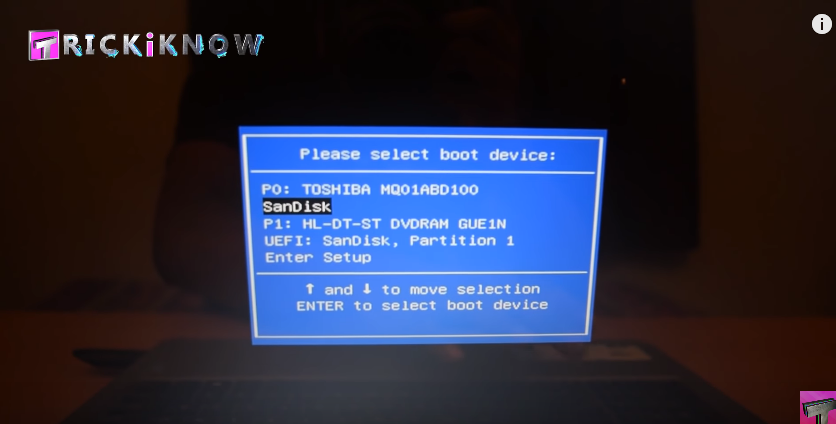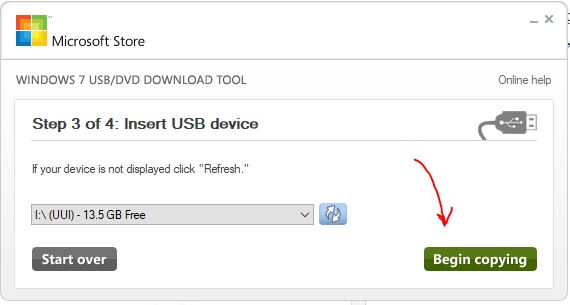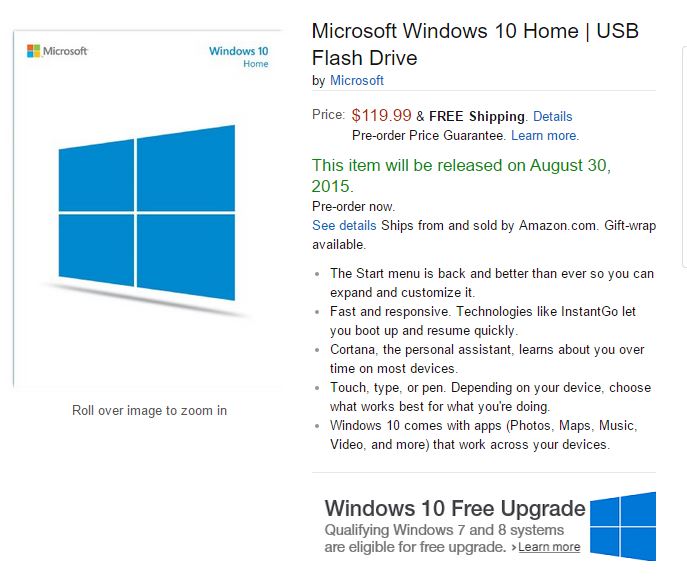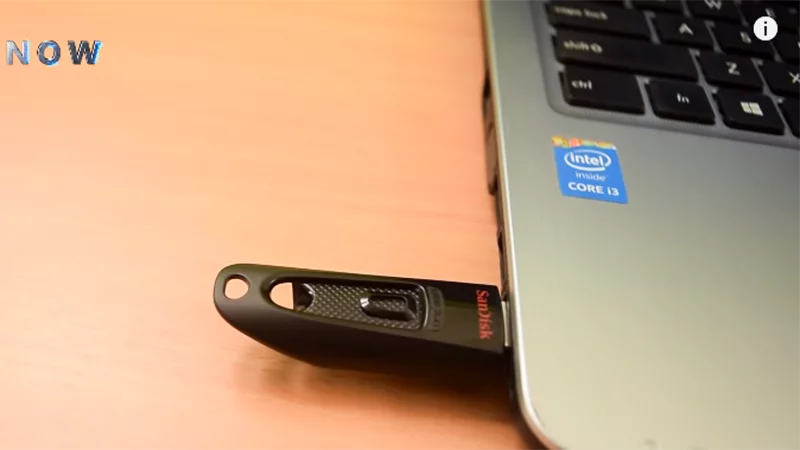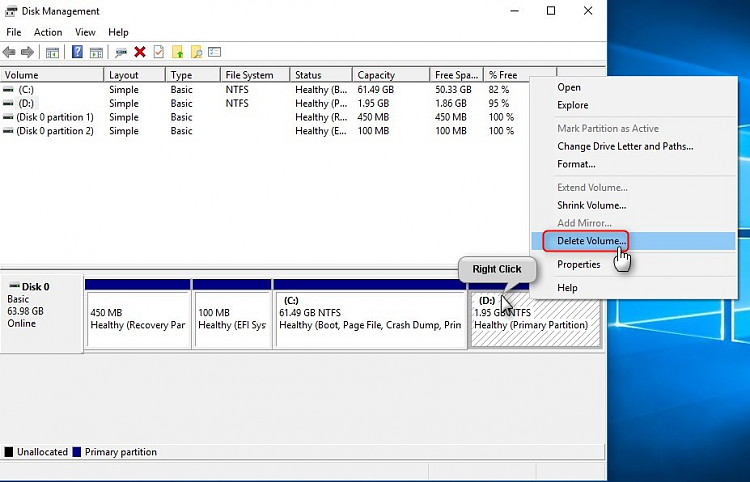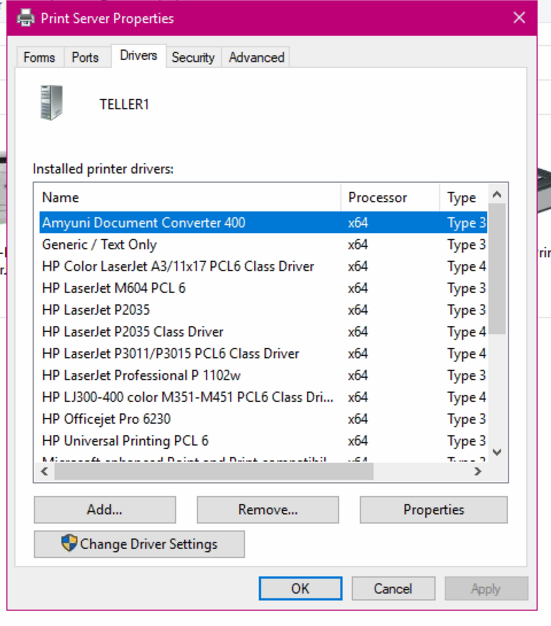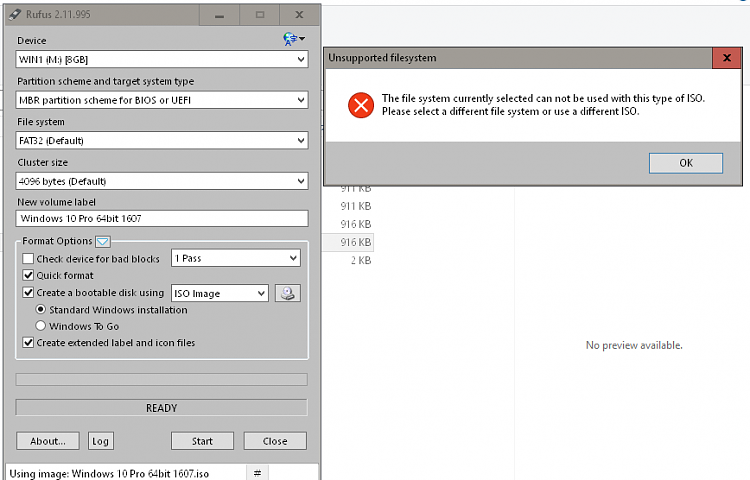However, if you do not want to wait for the automatic upgrade, the company also allows you to download the Windows 10 installation files using the Media Creation Tool. The tool helps to perform an in-place upgrade or create an installation media using a USB flash drive or DVD to perform a clean install. Furthermore, you can even use third-party tools like Rufus to download and create a bootable media to install Windows 10 from USB. A terms-of-use screen will pop up, and you'll need to then click Accept.
You must then confirm whether you want to upgrade your current PC or create installation media for another PC. These instructions show you how to create a bootable flash drive only. If you want to create a DVD, you'll need to follow our instructions below on how to create boot media using the Windows 10 ISO.
From a Windows PC download the Windows 10 Media Creation Tool. To create installation media, you have two options. First, you can download the ISO file to a computer and then use our instructions to create boot media. Secondly, you can run the Windows 10 Media Creation Tool and get it to create the boot USB drive for you. The latter option is the easiest, so that's the method we'll focus on first. In this post, we will see how to clean install Windows 10 using a USB flash drive, on a separate partition.
This process can even be used if you want to dual-boot it with another operating system. For this, you will have to first create bootable USB media from ISO for Windows 10. You will also have to create a separate partition, with at least 16 GB space, using the built-in Disk Management tool, if you plan to dual-boot it. This is one of its system requirements. The downside of this tool is that it leaves your computer and hard drives in their current state.
Ian Paul/IDGNow you have to decide whether you want to create installation media or just download an ISO file. We want to create a USB flash drive, so select that radio button and click Next. Ian Paul/IDGOnce the tool is downloaded, double-click the MediaCreationTool.exe file to launch it. After clicking through the licensing agreement, you'll have the option either to upgrade your current PC or create installation media.
We want the latter, so select the radio button labeled Create installation media for another PC and click Next. With the performance and capacity benefits achievable with USB drives, Microsoft now sells Windows 10 installation media on USB drives. To open a boot menu or change the boot order, you'll typically need to press a key immediately after you turn on your PC. For instructions on accessing the boot menu or changing the boot order for your PC, check the documentation that came with your PC or go to the manufacturer's website.
You would need a bootable USB drive to install or reinstall Windows 10 on your PC/laptop. The ideal method to create bootable media is using Windows Media Creation Tool. In this article, we've covered all the steps to install Windows 10 from USB drive. If you're reinstalling Windows 10 on your system for any reason, we suggest you take a backup of your system first.
However, if you forgot to take backup of your system data and reinstalled Windows 10, you can still get back your data using powerful data recovery software. Once you complete the steps, Rufus will run the automated script to download the Windows 10 ISO file from the Microsoft servers. Then you can use the tool to create a bootable media to install Windows 10 on a UEFI device without the need for the Media Creation Tool.
If you want to create a bootable DVD drive, you'll need to download the Windows 10 ISO file. This file is also useful if you want to create boot media whenever you like. There are two ways to download the file. First, from a non-Windows PC you can justdownload the Windows 10 ISO from Microsoft. You'll most likely need the standard 'Windows 10' ISO, which includes the installation files for the Home and Pro versions of Windows 10.
Run the Media Creation Tool and select Create installation media for another PC and click Next. On the next screen, select USB flash drive. Insert your USB drive into your computer (it needs to be at least 3GB in size, and you can buy an 8GB USB flash drive fromAmazonfor less than £4, so cost isn't a huge issue). Click Next, then choose the language, version of Windows (Home or Pro - you can ignore the N versions) and whether you need the 32-bit or 64-bit version.
It's very important that you get this step correct; if you don't, your computer will not activate, as you will not have the right licence for it. There will be two options, and one is to upgrade and second is custom if you are doing a clean install you should choose the "Custom" option. Since there is no need to format the partition on which you're installing Windows 10 via USB. (In case there was an older windows setup would be moved to a new Windows.old folder in the root directory of the partition). On the next screen, you'll have to select the hard drive on which you're going to install Windows. Most people here will just get one hard drive, but if your computer includes two hard drives, select the one on which you want Windows to be installed on.
Rule of thumb is to select the faster one if you have multiple hard drives. At this stage, you can also create multiple disk partitions on your computer if you want. If you do end up creating multiple partitions, select the one on which you want to install Windows and click on 'Next' to continue.
For USB, insert your flash drive into a port on your computer and simply load up Rufus. The process should take about 10 minutes or so. The process for each computer (or motherboard if you're building a gaming PC) will be different.
When you first turn on your computer, there'll be a small line of text telling you which button to press to enter BIOS. If you don't see it, or it goes away too fast, I suggest consulting your manual for instructions. On Windows 10, you can use at least two tools to create a USB bootable media. You can use the Microsoft Media Creation Tool to download the files onto a removable storage with support for both firmware types . Or you can use Rufus, a third-party tool that makes it easy to create a flash drive to install Windows with support for UEFI. Many people want to install Windows 10 onto a USB flash drive.
Unfortunately, Windows Installer does not allow you to install it to a USB flash drive. Is there a way to install windows 10 on a USB flash drive? Yes, here you will find instructions on how to install any version of Windows 10 onto a USB flash drive and run Windows 10 from the USB flash drive. Under 'Partition scheme and target system type' select 'MBR partition scheme for BIOS or UEFI'. Browse to your ISO and double-click to select it, then click Start.
On the next screen, if you're looking to install Windows on your PC, select the ISO File option. Doing so will save a file that you can click later to upgrade your PC to Windows 10. For most people, the ISO file is the safest method. After selecting ISO File, click Next, and select where to save the ISO file. Once the download is complete, you will have the ISO file on your computer's hard drive.
In no time at all, you can have a fresh new version of Windows installed on your PC or laptop. At the time of installing a fresh copy of Windows 10, you typically use a USB flash drive to launch the "Windows Setup" wizard to continue with the installation process. Before you can install Windows using a USB, you need to create the installation media itself. This will be read by your computer once the USB flash drive is connected, allowing it to boot from USB.
Below are the steps to create this bootable USB flash drive using the Media Creation Tool issued by Microsoft. Most computers made in the last 10 years or so will support booting from USB flash drives. Windows 10 requires a 4GB or larger flash drive to use as the install disk, with an 8GB drive costing from as little as £4. As well as making the installation process faster, using a flash drive means you'll be able to use the drive for other purposes after you've installed Windows. There are also plenty of slimline laptops out there that don't have DVD drives.
For most people, then, this option is going to be the best one to start off with. It's not difficult to use the tool, but there are a few options, so we've put detailed instructions in our guide on how to reset Windows 10 to factory settings. Windows 10 is available as a boxed product, and also on a USB flash drive, for those who want to buy it outright. We explain all this in the following article. If you've already got Windows 10 installed, you may be able to make things easy for yourself by reading our first installation note. It's fairly easy to create bootable USB installation media for Windows 10 when using Microsoft's Media creation tool.
Unfortunately this tool is not available for macOS. This post explains you how to do this without using a Windos-based PC or VM and without using BootCamp assistant. Let's start by creating a bootable Windows 10 USB. You'll need a USB drive with at least 8GB of space on it.
You can also use a DVD to create the installation media but a USB is just easier. At this time, insert a USB flash drive into the computer and follow the screen prompt to download Windows 10 ISO and burn it to USB drive. This process will finally create a Windows 10 bootable for installing Windows 10 on another PC. Simply navigate over to the Windows 10 installation site, scroll down to the Create Windows 10 installation media section, and then hit the Download tool now button. This will download the latest version of the Media Creation Tool onto your machine.
Click the Download tool now button, then double-click the downloaded MediaCreationTool.exe file to install the program. At the first screen for Applicable notices and license terms, click the Access button. Then click the Create installation media for another PC button and hit Next. Go torufus.akeo.ie, and download the latest version (2.12 at the time of writing). Plug in your flash drive, and it will appear at the top under Device.
Rufus will show the USB stick's drive letter in brackets after the flash drive's name. Once you've downloaded the image you'll need to either burn it to a DVD or install it to a USB flash drive . First, you'll need to download Windows 10.
You can download it directly from Microsoft, and you don't even need a product key to download a copy. There's a Windows 10 download tool that runs on Windows systems, which will help you create a USB drive to install Windows 10. To do this, visit Microsoft's Download Windows 10 page, click "Download Tool Now", and run the downloaded file. Select "Create installation media for another PC".
Be sure to select the language, edition, and architecture you want to install of Windows 10. Insert the installation media or mount the Windows 10 ISO before performing this task. Even with the rise of cloud storage, the USB flash drive is still vital for cases where the Internet won't cut it, especially as CDs and DVDs die off. Not only are USB drives typically higher in capacity than disc media, they are faster for copying data such as setup files, and have much quicker access times as well.
In short, installing software as large as Windows 10 from a USB drive is simply much faster than from a DVD . Windows Setup will now ask you to activate Windows by entering a product key. If you've already purchased Windows 10, enter the key, otherwise click on "I don't have a product key" to move forward. You can activate Windows after the installation. But if you don't provide a product key, the setup will ask you to choose which Windows 10 version you want to install.
Pick the one you're planning to buy as you won't be able to change it later. If your copy of Windows came on a USB flash drive, or you have a Windows product key and no installation disc,download a Windows 10 disk image from Microsoft. A 64-bit version of Windows 10 Home or Windows 10 Pro on a disk image or other installation media. If installing Windows on your Mac for the first time, this must be a full version of Windows, not an upgrade. If you're looking for a tutorial on how to install Windows 11/10 on new PC only with the help of a USB flash drive, don't walk away. Read through the following content and learn to install Windows 11/10 from a bootable USB or install with Windows 11/10 ISO file by media creation tool.
You should probably create a Windows 10 bootable USB stick or DVD as a backup , especially if you purchased your copy online or lost the original installation media. If you have a huge issue with your current install or are facing a new machine without an installed OS, having a bootable USB or DVD can be a lifesaver. Sometimes, USB drives might deliver a message to press a button before the PC will boot from your USB device. If this occurs and you don't do anything in response, your PC will look to the next boot option in the sequence order of the BIOS. In most cases, the next option would be your hard drive.
In most instances, the BIOS will usually not be automatically set to your device. If you skip this step, your computer will start regularly from your hard drive instead of getting boot information from your USB device. Back in the day, installing Windows to a new computer required you to transfer the files to a CD or DVD. With the advent of technology, installing Windows 10 is simpler now. You will need a USB flash drive and another computer with access to the internet to achieve the same.
You can install Windows 10 to a new computer by downloading a copy of the installation files onto a USB flash drive. It is important to note that the USB flash drive will need to be 8GB or larger. 4.You'll be asked to select the language, edition and architecture you want to use.


